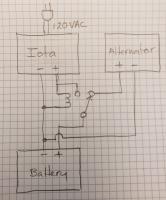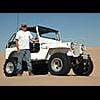I will be installing a Victron DC-DC charger to take care of the Ranger's smart alternator. Since I plan to switch over to LiFePO4 in the near future, I will take care of the Iota at the same time with a shore power controlled relay to switch input to the Dc-DC between the Iota and the Alternator. My Iota has the built-in IQ4 for AGM, so it's voltage (13.6V) is too low for LiFePO4.
This involves taking off the front panel to the kitchen unit. So if I'm digging in this deep, I'd like to put a shunt on the input to the master 12V switch so i can monitor my DC power usage.
Has anyone gotten to the back of the master switch? I have a 2015 Fleet (similar, I believe to all models after)?
Side comment: The Victron DC-DC, like most of their stuff, is microprocessor controlled and uses Bluetooth for control (setting parameters, etc.) and readout. Their Bluetooth is industrial strength because they, in fact, sell the bulk of their products into the industrial world and Bluetooth is their interface to the CAN bus network and some other industrial networks. CAN bus is the dominate industrial network. They offer a WiFi to Bluetooth adapter so their equipment can be easily interfaced to a private network or even the internet. It's even possible for me, with my cell phone in the camper (with cell signal and their App) to monitor and control the Victron gear from home - if I could come up with a scenario that made any sense to do it.


















